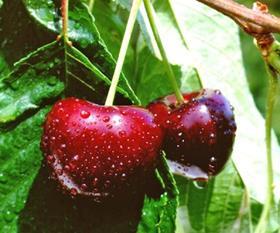
A new market access protocol has been signed allowing for the shipment of Australian cherries to China after years of negotiations, industry body Cherry Growers Australia (GGA) has announced.
The first cherries from the Pest Free Area (PFA) State of Tasmania was dispatched to Melbourne on 16 January for shipment to Beijing the next day.
CGA has worked with the Federal Department of Agriculture, Fisheries and Forestry (DAFF) and the Chinese Agency of General Administration of Quality Supervision, Inspection and Quarantine (AQSIQ) to gain access to this significant export market.
China’s AQSIQ and Australia’s DAFF signed the final protocol on 7 January 2013, after which DAFF and the Entry-Exit Inspection and Quarantine Bureau of the Peoples Republic of China (CIQ) conducted a successful industry audit on 14 and 15 January 2013 to complete the sign-off process.
Export shipments of cherries will be sent from around 10 growers through to the end of the 2013 cherry season in Tasmania, which will includes the Chinese New Year gift-giving period.
National President of Cherry Growers Australia, Andrew Smith from Victoria, said the completion of the agreement is a fantastic step forward for the Australian Cherry industry.
“This will really help set the industry on a new course and is in line with our Export Roadmap which aims to lift the exports of Australian cherries from 20 per cent per season, which is around 2000 tonnes to about 20 countries globally, to 50 per cent or 6000 tonnes by 2017,” said Smith.
“We are living in the Asian Century and there is great potential for Australian industries to benefit from access to the Asian markets. We are now on track to target new emerging Asian markets and look forward to continuing to supply and growing the existing markets we already service,” he said.
“We have a season that only lasts 100 days so we need to make every opportunity a winner in both the domestic and export markets. Feedback shows that Australian cherries are considered very high quality, have strong appeal to consumers across Asia and command great prices.”
CGA Chief Executive Officer, Simon Boughey, said that the industry has a strong commercial advantage working with Asian markets.
“We are able to airfreight cherries to their destination within two to three days of harvest and when shipped by sea, product can arrive within 14 to 16 days. This is still far quicker than our main competitor Chile whose product takes six weeks by sea,” said Boughey.
“Our growers will be targeting the premium end of the market during the peak counter-seasonal period from now until the Chinese New Year on 10 February, which is celebrated across a number of counties in Asia and of course in Australia,” he said.
Boughey noted that the final audit to export cherries into China has been discussed and approved. He said the CGA will work with DAFF, AQSIQ and CIQ for the next few weeks and will then review of the protocol after the first year of trade.
“Ideally we would like to have airfreight and seafreight options for all growers to utilise from across Australia in 2013/14 season,” Boughey said.
“It’s been a long process but it’s now a reality and I would like to thank all the CGA Board members over the last 10 years, and the representatives from DAFF, AQSIQ , CIQ and Quarantine Tasmania for their part in making this all happen.”
Fruit Growers Tasmania Business Development Manager, Lucy Gregg, said, “This is a fantastic opportunity for Tasmanian cherry growers and exporters to access another key Asian market. We currently have access to Taiwan, South Korea and Japan due to our area-free status for fruit fly and a range of other non-protocol markets across Asia, Europe and other regions.”
“The Tasmanian industry has expanded significantly over the last five years and with production to increase further over the next few years it is very important that we develop more significant export markets,” Gregg said.
Currently 10 Tasmanian growers have indicated that they would like to send cherries to China for this season but it is expected more than 50 growers may consider sending fruit from Tasmania into the Chinese market next season.
“The orders for China are already arriving and we are expecting a strong first season of exports,” Gregg said.



